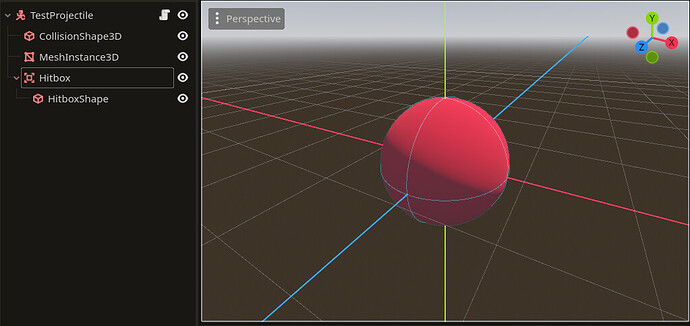Godot Version
4.4.1
Question
This question is going to sound so silly considering my ambitions, but how do I implement collisions for projectiles?
That seems like a really simple question, but I have no experience with working with collisions in Godot. So I’ll need some guidance to learn, like I did with raycasts.
I tried watching some tutorial videos, but they didn’t help me understand what I was even doing.
All I want is for the projectile to delete itself when it hits a body. If I learn how to get that implemented, I can figure out a lot more.
So my projectile scene is really simple:
Just a CharacterBody3D parent with some collision shapes and a mesh.
For collisions, do I use the CollisionShape3D node or the Area3D node? I viewed the docs, and it seems like Area3D has all the built-in functions. But I’m not sure.
Let me know how I should implement this. Thanks in advance.

